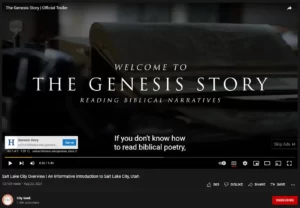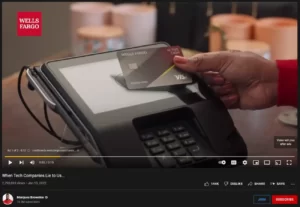If enrichment were my goal, you wouldn't wouldn't be reading this...
how we got here
When I started Snazzy Labs in junior high school, I could have never anticipated that my little hobby making iPhone accessory reviews would become a decent job through high school and college; the idea that it could flourish into a company that would employ myself and others was inconceivable. In a way, I think that 15-year-old naïveté is the only reason you’re reading this. In all these years, I have never viewed Snazzy Labs as a vessel to earn money. If I had been foolish enough to, I’d have driven the channel—and my reputation—into the ground years ago (remember Epic Meal Time?).
Since 2008, Snazzy Labs has slowly evolved into a trusted outlet for accurate information and measured opinion. Our reporting has been cited as the source in articles from The Washington Post, Financial Times, Bloomberg, and dozens of other reputable media outlets. This image is one that I cannot let tarnish because, (a) it’s one of the few things that sets Snazzy Labs apart from hundreds of other really excellent YouTube channels, (b) to put the company’s existence at risk in the pursuit of short-term gains is a fool’s errand, and, (c) disseminating factual, educational, worthwhile videos is the right thing to do.
It’s my belief that most people attempt to do good and that while some bad eggs lie to their audiences, the large majority of media personnel intend to be honest. Unfortunately, given the tumultuous influx of sponsorship dollars and increasingly demanding algorithms that penalize the distinction between organic and sponsored content, many creators find themselves in between a rock and a hard place and skirt between legality and surreptitiousness to please paying sponsors while avoiding the appearance of “selling-out.” This can almost always be avoided but typically isn’t until it’s too late.
So, in the spirit of transparency (and in part due to the excellent ethics statement published by my friend Michael Fisher of MrMobile fame), this page will exist to, (a) disclose how Snazzy Labs makes money, (b) outline how I ensure any monetary transaction be made unconditionally clear to all viewers, and, (c) make certain our carefully crafted reputation is put “on the line” because trust is earned; without it, we’re nothing.
Stay Snazzy,

Main revenue streams
Integrations + -
Thanks to YouTube's drastically volatile and generally dropping AdSense rates, the majority of our revenue comes from integrated ad spots. For reference, integrated ads are the 30-60 second spots about, for example, a GaN USB-C charger in the middle of a MacBook Pro review. See an example of an integrated ad below.
These are the most popular types of "brand integrations" we do as they have the highest return on ad spend (ROAS) for advertisers and they also have the smallest change to viewer watch time (that is to say, y'all generally like them). You'll always hear a clear transition into the sponsored segment, such as, "this video is sponsored by [brand]" as well as an on-screen callout. You'll know when the endorsement ends as we return to the video's topic.
We have the luxury of a very good sponsor lineup thanks to our channel size, industry, and infrequent publishing schedule. What this means is that I get paid to talk about products that are genuinely cool; that's fantastic! With that said, we do accept talking points and a round of revisions from the brand sponsoring, so while you'll never catch me lying in ad copy (that's actually illegal), consider that the content is a paid endorsement, and you should perform your own due diligence before purchasing.
AdSense + -
A large portion of our revenue comes from pre-roll and post-roll advertisements placed onto our videos by Google's AdSense platform. We do not have any affiliation with the companies depicted in AdSense advertisements.
Part of the problem with AdSense is that we don't have any editorial control or input on advertisements placed by Google.

Small channel with low-CPM ad

Large channel with high-CPM ad
YouTube Select (which, unless you're a creator, you likely haven't heard of) is a replacement for YouTube Preferred and AdWords prime packs. Select allows higher-profile brands access to a specific subset of hand-curated creators in a given category at a higher CPM. You may have noticed some larger channels have ads for brands like Coca-Cola instead of ads you'd find on small channels, like Uncle Mike's Dirty Toe Cream. See examples of this to the right.
Snazzy Labs is not currently part of YouTube Select; however, we don't want a high quantity of low-quality ads. For this purpose, we are part of the very small Vox Media Network Producer Program (along with some of your other favorite tech YouTubers) which provides us ads that pay us out slightly more on average than standard AdSense insertions, but more importantly, filters out most of the low-quality ads.
You will no longer see any of these advertisements on all of YouTube if you are a YouTube Premium subscriber or use an ad blocker in your browser.
Dedicated Content + -
On the very rare occasion, Snazzy Labs will publish a whole video about a sponsored topic. See an example of a dedicated ad below.
Dedicated videos are really, really hard to do right with a very high CPM for advertisers (basically, it doesn't make sense almost ever), but I will attempt dedicated ads if these three internal requirements are met:
- An integration (previous tab) couldn't satisfy the sponsor's requirements for the campaign. e.g. UTOPIA (in the above video) wanted to show how their fiber network deployment is unique from for-profit companies. Such detail could not be placed in a 60-second ad.
2. I am confident that despite the sponsored nature of the video, viewers can finish the video having learned something important about technology and how things work. e.g. 1.5M+ views on the above video prove that ads can be educational and fun.
3. I can retain 90%+ script originality. PR-speak and marketing mumbo jumbo sucks. I know my audience, I know how to resonate with them, and I know what they like. Brands pay me to reach potential customers; not vice versa. Subsequently, I write the script without input or supervision and the sponsor of a dedicated video is only allowed to request up to 10% of it be changed (and both parties must agree on the changes). In short, the dedicated ads you see on my channel may be paid for, but they're my content. e.g. UTOPIA provided zero change requests and it was published 100% as I wrote it.
You will always know a video is sponsored as there will be both a burned-in, large, on-screen callout as well as an audible cue within the first 5 seconds of the video.
Social Media Posts + -
Occasionally, we'll do small, sponsored campaigns in the form of an Instagram story, reel, or post as well as the occasional tweet on Twitter.
These sponsorships are always disclosed in an obvious fashion using #ad and #sponsored. See an example below.
Affiliate Linking + -
A very small portion of our revenue (<4%) comes from the Amazon Associates program. Occasionally, when we mention products in videos, we will place purchase links to those products in the video description.
When a viewer clicks a link, products that are purchased during that browsing session kick back a small return for us. Usually, we only include links valid for Amazon US; however, we will sometimes use Geniuslink, a service that routes viewers to the affiliate program of their respective country. Geniuslink costs us money per click, so we typically only employ them on links that we perform to, at minimum, break even on.
The program's payout is insignificant to our bottom line and our content is in no way tailored to insert product links. Because of this, we typically do not disclose that said links are affiliated.
Licensing + -
While not common (3-4x/year), brands will occasionally request usage of footage we've shot for their own supercuts, advertisements, social shares, etc.
Licensing is negotiated on a use case basis with terms detailing the extent and time-usage permitted. If footage is re-cut by the licensee, Snazzy Labs requires footage be audited and approved before use to ensure the cut doesn't alter or exaggerate the extent of endorsement.
Our content is not scripted for sound-bites and we do not create content to encourage licensing.
A few smaller items of note...
I don't engage in short-term trading. The large majority of my market holdings are in large ETFs that perform roughly on average with the market as a whole—nothing special. I do hold a small number of shares in a few tech companies; however, they are of fairly insignificant value and in no way, shape, or form, would (or even could) I use my position as a media outlet to enrich my return. For total transparency, I have listed the individual tech stocks (and corresponding share count) that I own below.
Quinn Nelson's Share Holdings (as of 18 January 2022)
Advanced Micro Devices (AMD) - 9 shares
Block (SQ) - 5 shares
Microsoft (MSFT) - 2 shares
Tesla (TSLA) - 5 shares
BlackBerry (BB) - 94 shares
Apple (AAPL) - 42 shares
Alibaba (BABA) - 4 shares
We are often supplied product samples by companies for the purpose of review and display. While not an industry-wide belief, Snazzy Labs considers review samples property of the companies that send them and they can be recalled within a reasonable timeframe. We neither resell nor gift product samples; they are stored for a reasonable time if companies do not request their immediate return, after which, they're recycled (if possible) or destroyed.
It might seem a bit cynical and entitled (perhaps it is); however, we don't view review samples as a perk nor profit-center and samples sent for review don't impact our coverage of said products. Additionally, we disclose when a product is sent to us as per FTC requirements.
Snazzy Labs has (and will continue) to accept travel accommodations for coverage of certain products/events; however, such accommodations do not impact our coverage quantity or opinions of the product or company supplying said accommodations.
It has once been asked of me before how I can possibly remain objective when I'm being "gifted" travel and accommodations. It's a good question, and if I were a low-paid journalist working for a much larger entity, such perks might entice me. Everyone "has a price;" however, mine is unreasonably expensive and extends far, far, far, far, far beyond any accommodation provided to me when covering a product. I view myself as the one bringing value—not the other way around—so in no way, shape, or form do I feel indebted to any company, ever.
